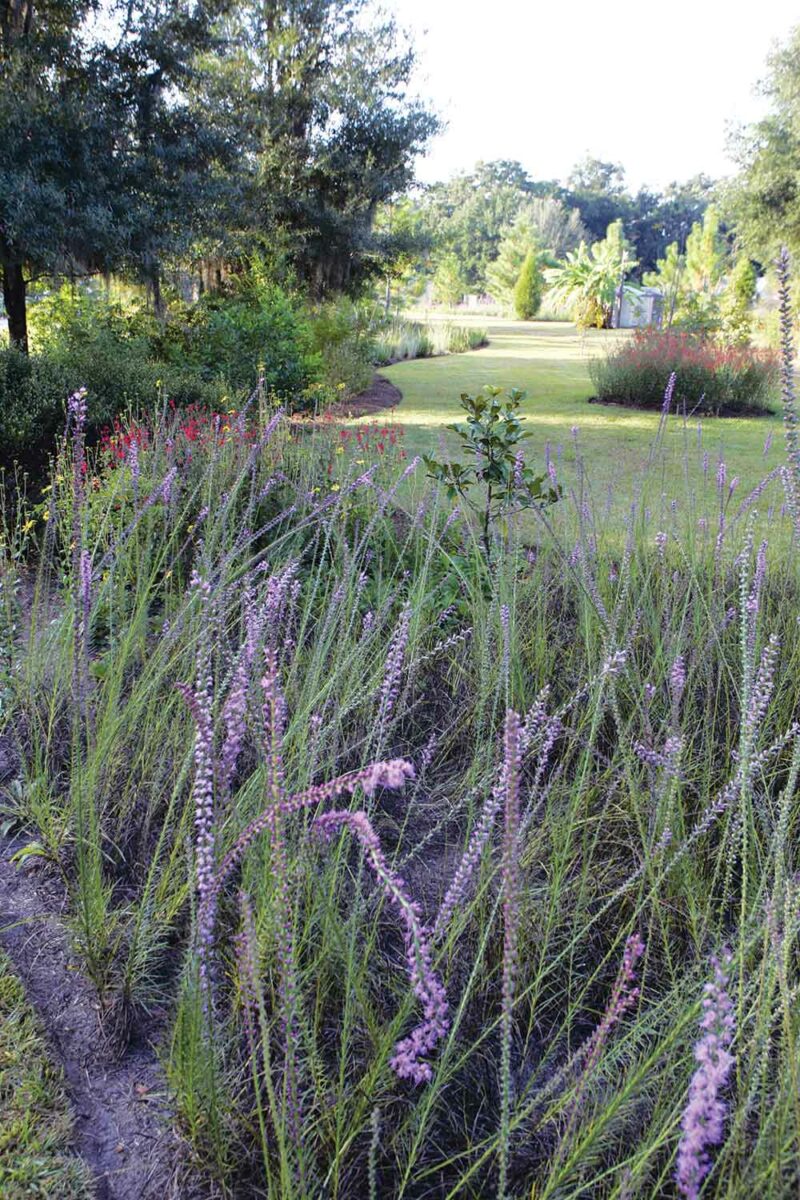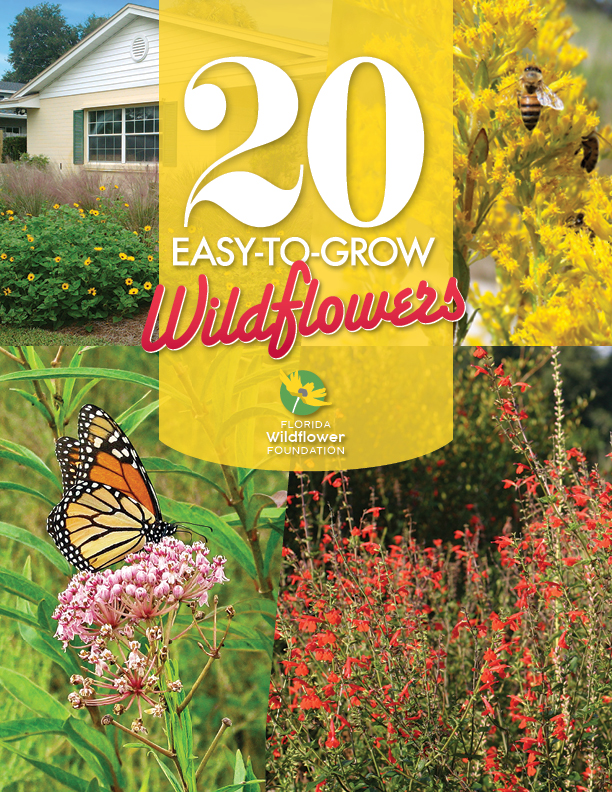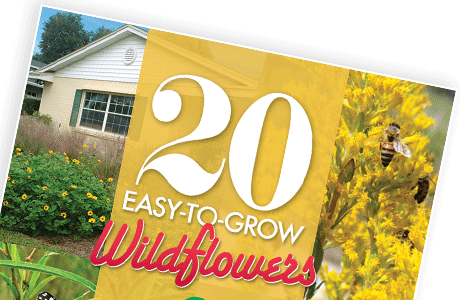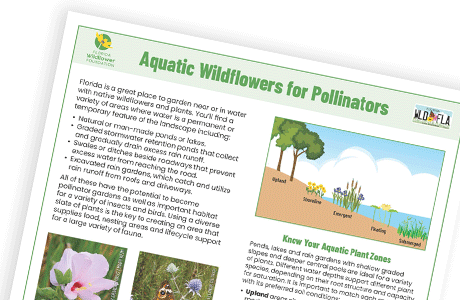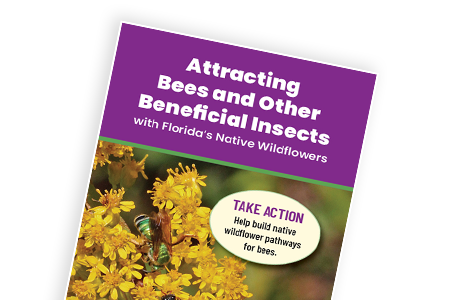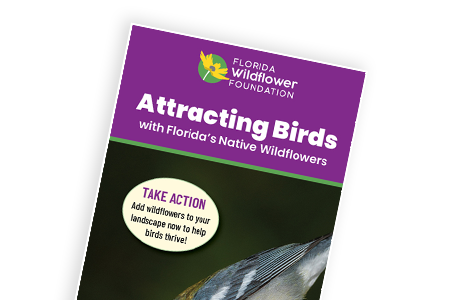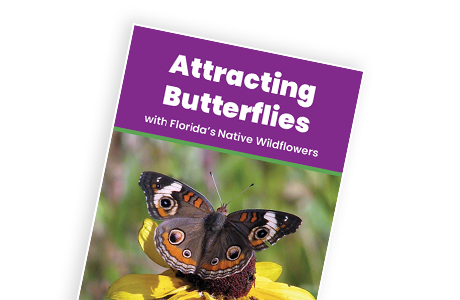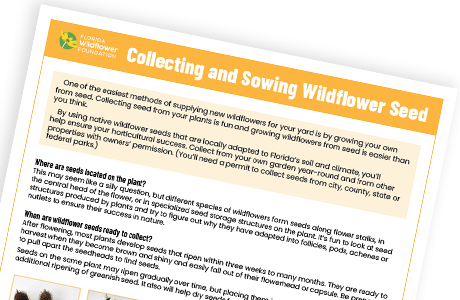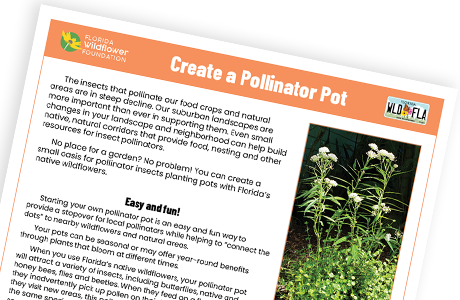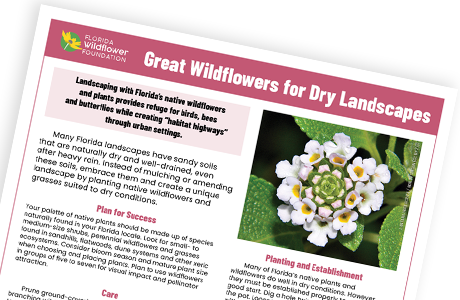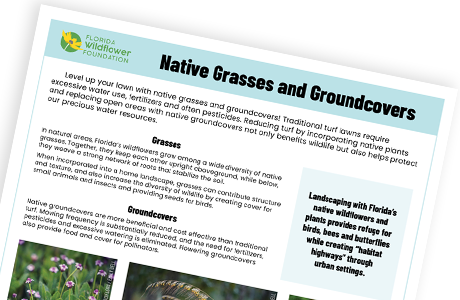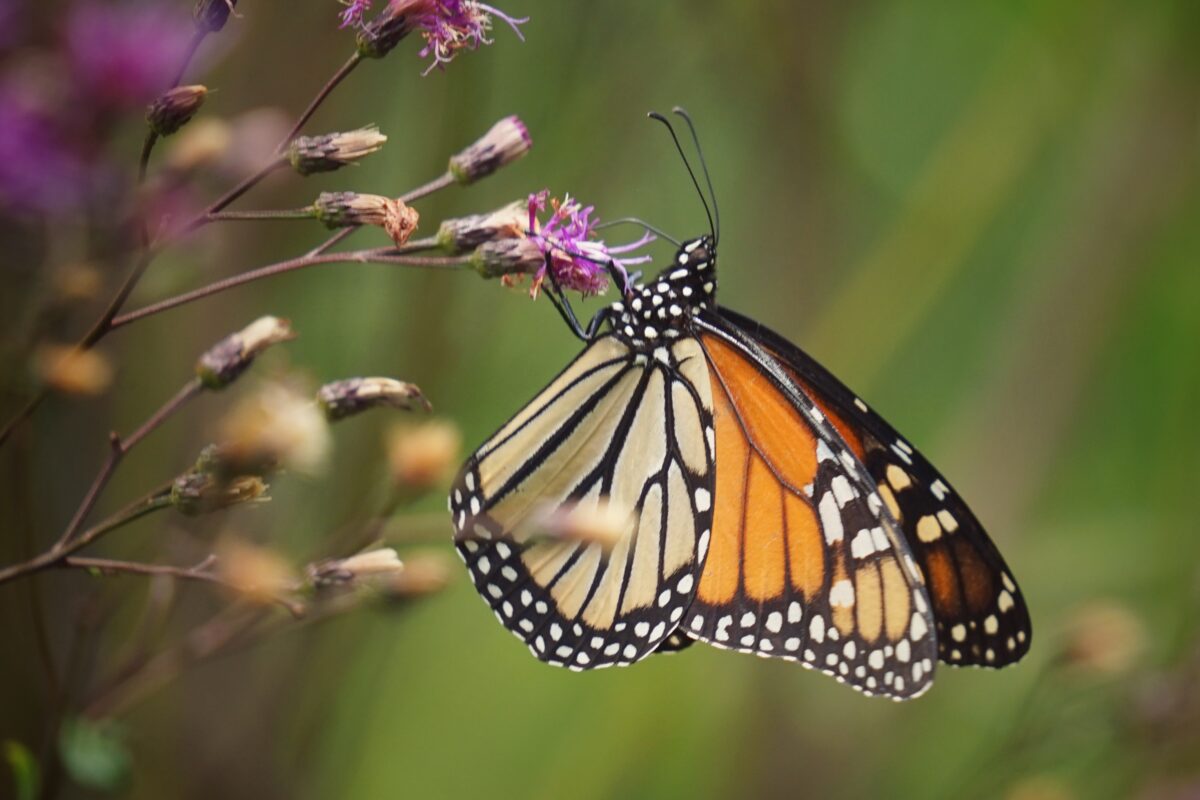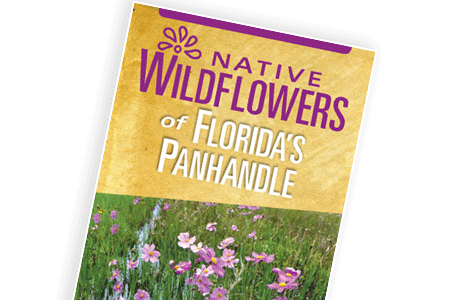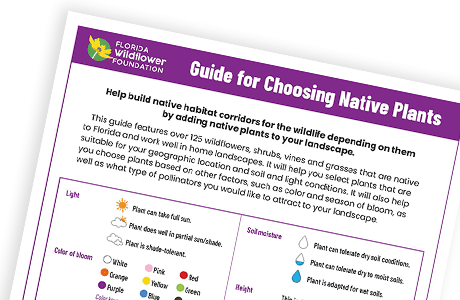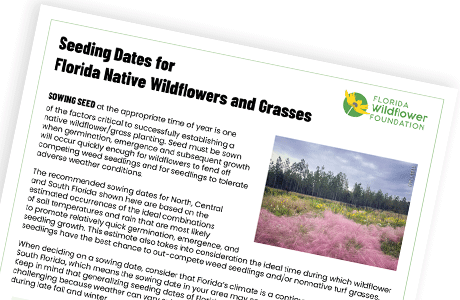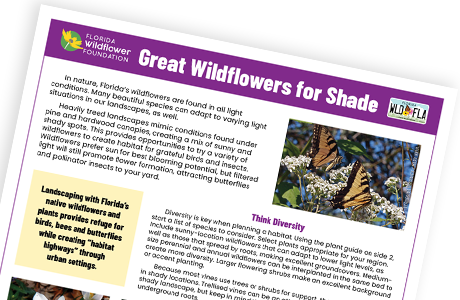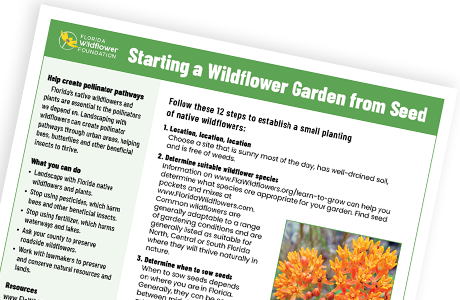Learn to Grow
Get started growing wildflowers
Bring best practices home. Discover the best methods for establishing wildflowers in your garden with resources that will help you select and find the right plant for the right place.
Why plant native?
YOU can help stem the tide of global insect decline and create habitat and pathways for birds and other wildlife!
Incorporating regionally appropriate native plants into our home landscapes and other urban areas supports local biodiversity, reduces the need for fertilizers, pesticides and herbicides, and conserves water resources, all while providing food and shelter for local wildlife.
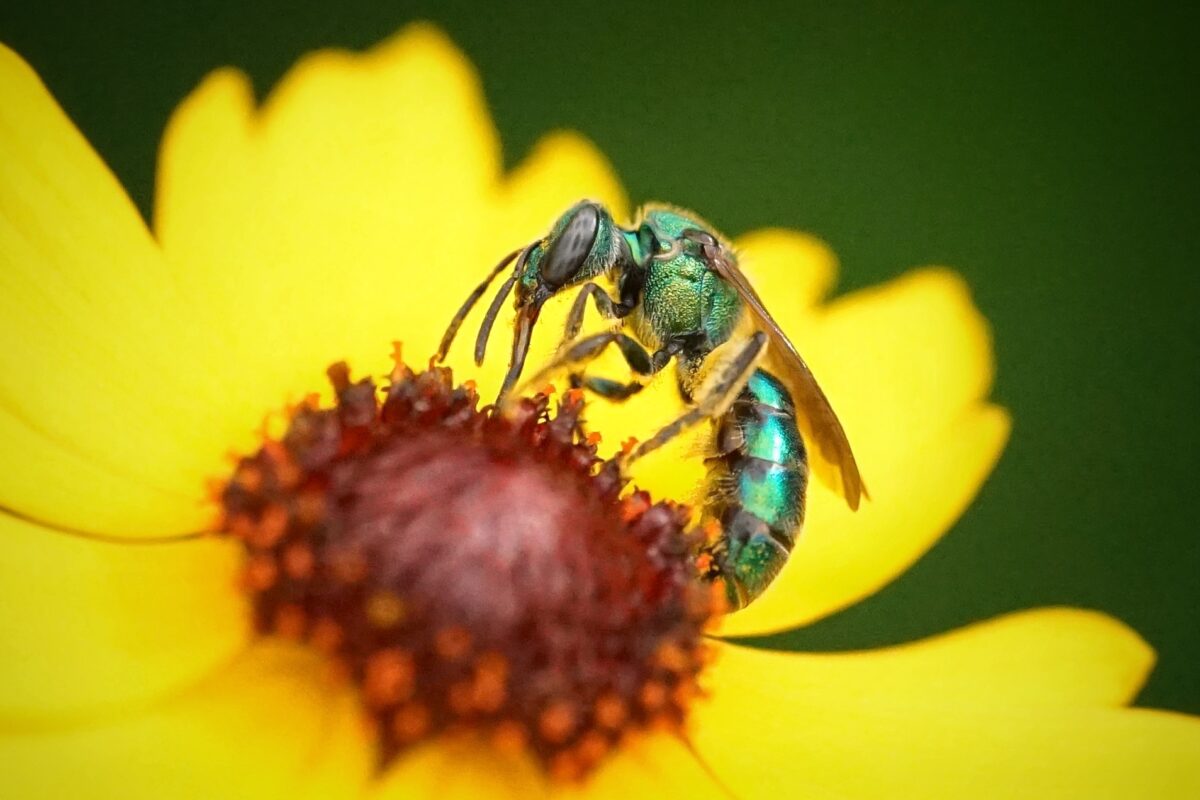
What is native?
A Florida native wildflower is a flowering herbaceous species that grew wild within the state’s natural ecosystems in the 1560s, when Florida’s first botanical records were created.
Read the Foundation’s full definition of Florida native plants, including cultivars.
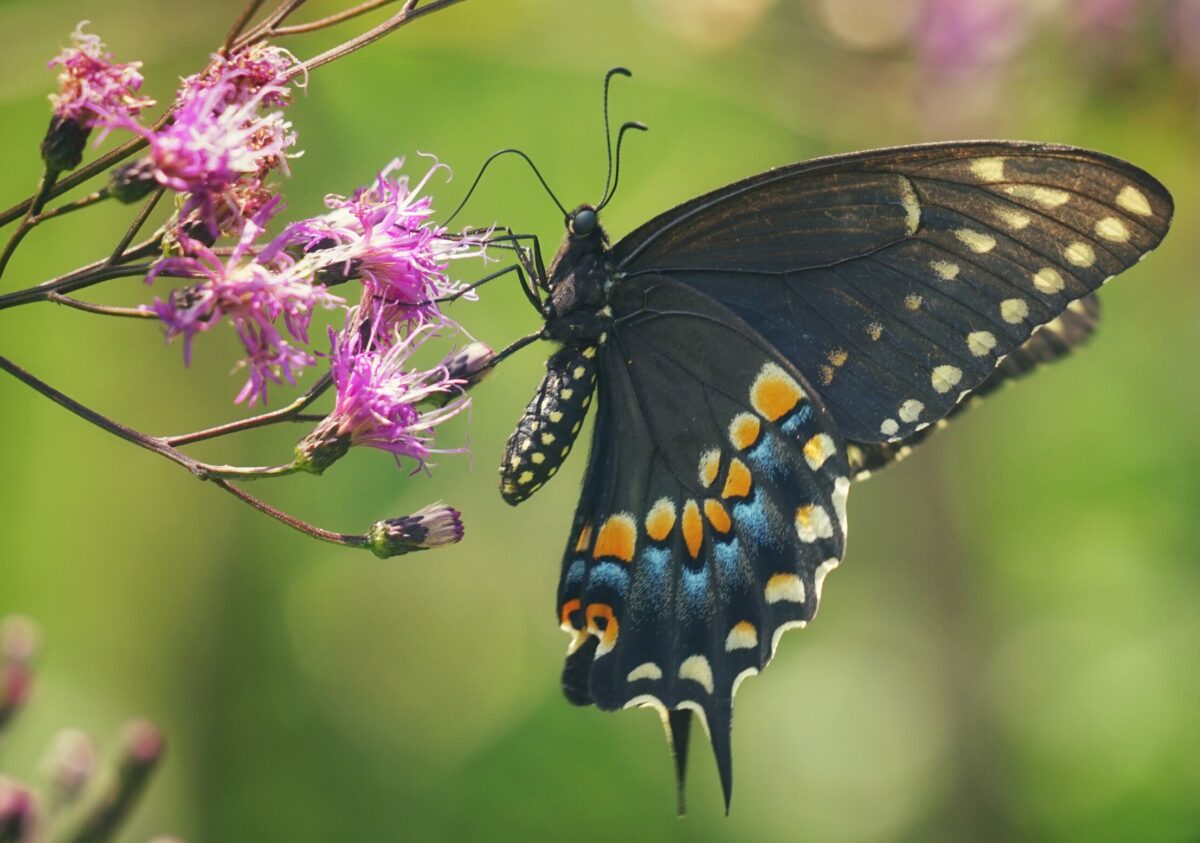
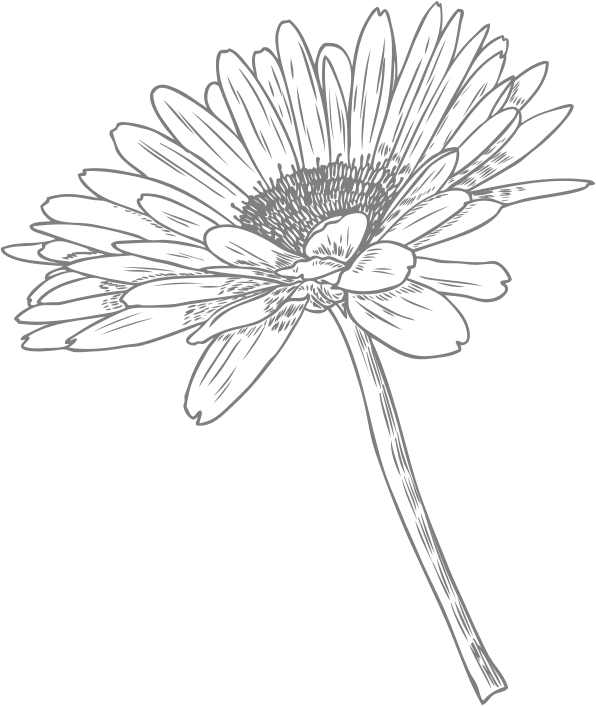
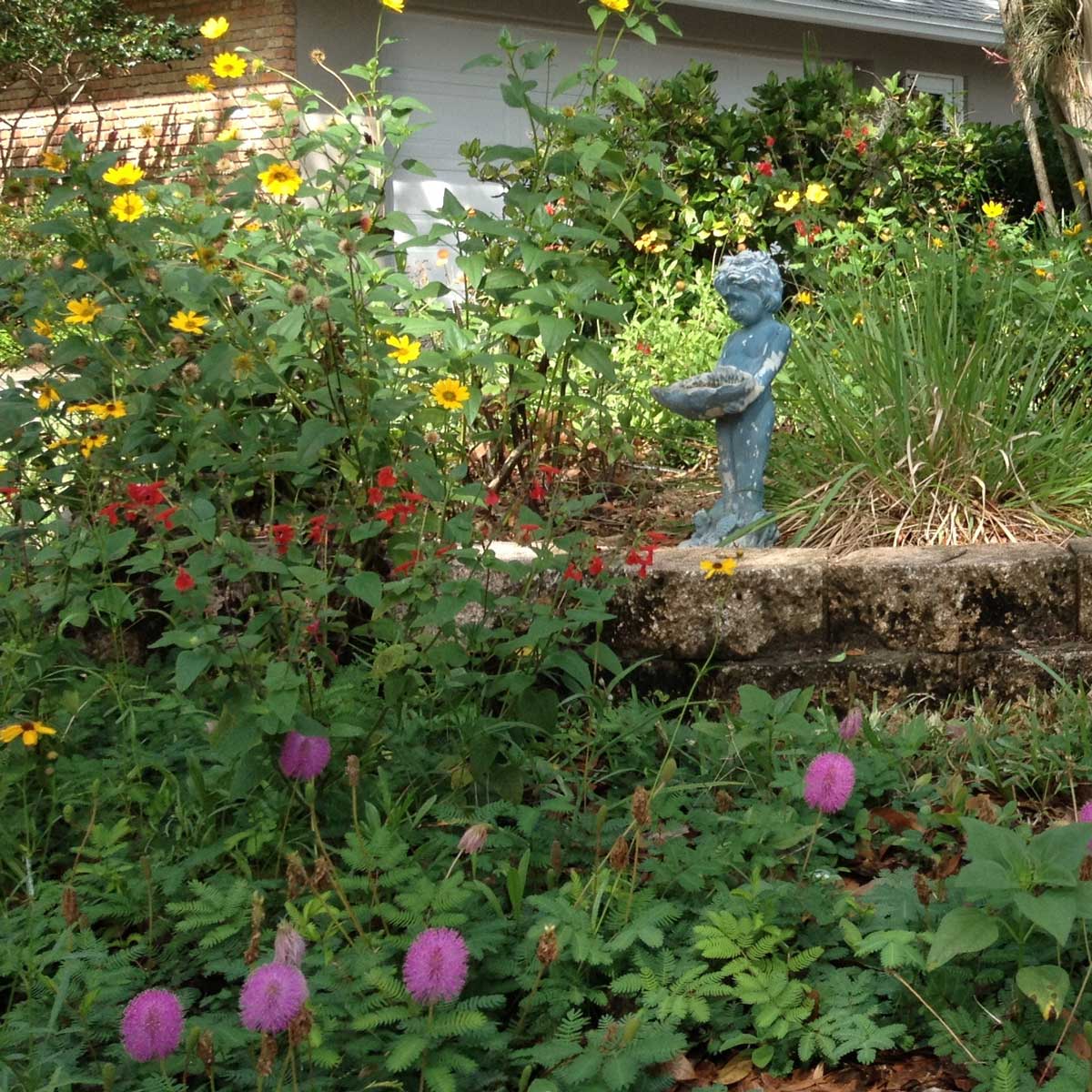
Your Florida garden plan
Getting Started
Start with 20 Easy Wildflowers
With interest mounting in using wildflowers in urban landscapes, there is a huge demand for information for those new to Florida’s native plants. Enter “20 Easy-to-Grow Wildflowers.”
The 24-page magazine features a selection of 20 “tried and true” wildflowers that are easy to grow and maintain. And, with interest in supporting our beleaguered bees, butterflies and wildlife at an all-time high, readers will find that the selected plants excel at providing nectar, pollen and habitat.
Get the facts on growing native wildflowers
Adding wildflowers to your landscape is easy — just select the right plant for the right place. On this page, you’ll find information that will help you be a blooming success. Reduce shipping costs and carbon footprint by downloading and printing these educational handouts.
Order copies of our brochures and handouts for a school, meeting or event. Or print them yourself and reduce shipping costs and carbon footprint. Just click on the handout(s) below and download them as printable PDFs.
find everything you need
Plants and seeds
Plant Real Florida
Find plants, native nurseries and landscape professionals
Florida Wildflower Seed Co-op
Purchase native wildflower seeds
Other resources
Florida Native Plant Society
Build a list of appropriate native plants for your landscape
Natives for Your Neighborhood
See what native plants occur in your Zip code
Tools and tips for homeowners and professionals
More resources for sustainable landscaping
